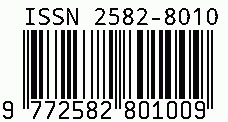
International Journal of Leading Research Publication
E-ISSN: 2582-8010
•
Impact Factor: 9.56
A Widely Indexed Open Access Peer Reviewed Multidisciplinary Bi-monthly Scholarly International Journal
Plagiarism is checked by the leading plagiarism checker
Call for Paper
Volume 6 Issue 4
April 2025
Indexing Partners



















Tripple Talaq – An Analysis
| Author(s) | Rukhsana gauri |
|---|---|
| Country | India |
| Abstract | This is the custom of immediate divorce between the Muslim Brotherhoods. By simply reciting the word "TALAAK" three times to balance the termination of the marriage, it is beneficial to their male counterparts, the husbands. Taking into account the complexity of human nature, sudden emotional outbursts under the current high temperature of life sometimes give them a simple way to satisfy their desire for polygamy. Then, through electronic means, as pointed out by the Supreme Court, this chauvinistic and paternalistic approach not only violates the right to equality (Article 14), but also presents gender discrimination. The judgment violates the religious personal law, and it can correctly prove that their continued practice, exercise, and dissemination are justified. |
| Keywords | Talaak, Tarak, Religion, Constitution, Divorce, Islam |
| Field | Sociology |
| Published In | Volume 2, Issue 8, August 2021 |
| Published On | 2021-08-14 |
| Cite This | Tripple Talaq – An Analysis - Rukhsana gauri - IJLRP Volume 2, Issue 8, August 2021. |
Share this


CrossRef DOI is assigned to each research paper published in our journal.
IJLRP DOI prefix is
10.70528/IJLRP
Downloads
All research papers published on this website are licensed under Creative Commons Attribution-ShareAlike 4.0 International License, and all rights belong to their respective authors/researchers.

